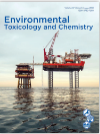Validation of the Nickel Biotic Ligand Model for Locally Relevant Species in Australian Freshwaters

Scientific abstract
Australian freshwaters have relatively low water hardness and different calcium to magnesium ratios compared with those in Europe. The hardness values of a substantial proportion of Australian freshwaters fall below the application boundary of the existing European nickel Biotic Ligand Models (NiBLMs) of 2 mg Ca/L. Toxicity testing was undertaken using Hydra viridissima to assess the predictive ability of the existing NiBLM for this species in extremely soft waters. This testing revealed an increased competitive effect of calcium and magnesium with nickel for binding to the biotic ligand in soft water (<10 mg CaCO3/L) than at higher water hardness. Modifications were made to the NiBLM by increasing the binding constants for Ca and Mg at the biotic ligand to account for softer waters encountered in Australia and the more important competitive effect of calcium and magnesium on nickel toxicity. To validate the modified NiBLM, ecotoxicity testing was performed on five Australian test species in five different natural Australian waters. Overall, no single water chemistry parameter was able to indicate the trends in toxicity to all of the test species. The modified NiBLMs were able to predict the toxicity of nickel to the test species in the validation studies in natural waters better than the existing NiBLMs. This work suggests that the overarching mechanisms defining nickel bioavailability to freshwater species are globally similar, and that NiBLMs can be used in all freshwater systems with minor modifications.
Full reference (link):
Peters, A. , Merrington, G. , Schlekat, C. , De Schamphelaere, K. , Stauber, J. , Batley, G. , Harford, A. , van Dam, R. , Pease, C. , Mooney, T. , Warne, M. , Hickey, C. , Glazebrook, P. , Chapman, J. , Smith, R. and Krassoi, R. (2018), Validation of the Nickel Biotic Ligand Model for Locally Relevant Species in Australian Freshwaters. Environ Toxicol Chem. Accepted Author Manuscript. . doi:10.1002/etc.4213
